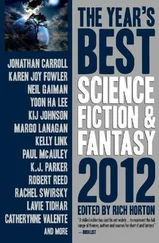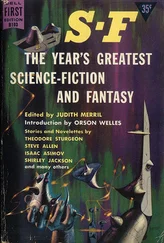The final proof of the existence of life on Enceladus could, in all probability, only be found by an expedition directly exploring its ocean. The conditions on Enceladus are actually quite good for this, as at least parts of the ice crust are thinner than on other moons.
Humans have experience drilling through layers of ice. Usually, conventional drill rigs are used for this, but it would be impractical to take them along to Enceladus.
The alternative would be a cryobot, an ice-drilling robot already developed by the German physicist Karl Philberth in the 1960s. In 1968, his ‘Philberth Probe’ reached a depth of 1,000 meters in the Greenland ice sheet.
The current leader in this area is the U.S. company Stone Aerospace with its ‘ Valkyrie .’ This ‘Very deep Autonomous Laser-powered Kilowatt-class Yo-yoing Robotic Ice Explorer’ is partially financed by NASA. It does not carry an energy source on board, but is supplied by a laser via a fiber-optic cable. Currently, Stone Aerospace is testing their Valkyrie with a power level of 5-kilowatts on Earth. The version for Enceladus would have to be considerably larger, but it would work according to the same principle. It would need from 250 kilowatts upwards to 1 megawatt of power. The more power, the faster the cryobot can drill, although "drill" is not really the correct term. The laser heats up the water, and the hot water is aimed at the ice, which then melts like butter. This works more quickly and requires less maintenance (which is very important) than a metal drill that would wear out. In addition, the hot water can also be used for generating energy. The fiber-optic cable, in turn, can be used for transmitting information.
However, the Valkyrie concept only works if you bring along a source of energy. One cannot simply generate 5 megawatts with an emergency generator. One would need a small nuclear power plant. Or one could use the dual function of the DFDs, each of which provides 10 megawatts of power. As Enceladus does not have an atmosphere, the energy could be beamed almost without loss via laser from the orbiting vessel to the lander module, which then would feed it to Valkyrie through the fiber-optic cable.

Life on Enceladus?
If there is life on Enceladus, it would be located at the bottom of its ocean. Here, as already described, serpentinization reactions continually occur. These generate heat, hydrogen, and methane—each important for life. At the same time, other minerals that are important as nutrients for life might be dissolved in the water, along with the various salts it contains. The ocean probably has existed longer than there have been conditions on Earth suitable for life as we know it. Thus, there really was plenty of time.
Of course, these organisms would have to survive without photosynthesis, as no light reaches the bottom of the ocean. They also would have to go without oxygen. Yet even here on Earth, researchers have already identified three habitats with similar conditions. One of them was found in the depths of a South African mine. It is based on radioactive decay energy and consists of bacteria-reducing sulfur. However, there is hardly any sulfur on Enceladus. The other two were found by scientists in volcanic rocks near hot springs deep below the ground. They are dominated by archaea. These organisms consume the hydrogen emerging here due to plate movements, and they burn it with carbon dioxide and generate the energy they need for living, as well as traceable byproduct amounts of methane and water. Together with bacteria and eukaryota, the archaea form the three domains of life, and they are the most ancient. Archaea are single-celled, and the DNA containing their genetic information is circular. They possess simple organs of movement (flagella) and sometimes build a kind of skeleton to stabilize their shape. They differ from bacteria in the structure of the ribosomal RNA, which is responsible for translating genetic information into proteins.
On Earth, archaea are often found under extreme conditions. Some varieties only flourish at temperatures above 80 degrees Celsius, while others prefer living in highly concentrated saline solutions, or very acidic or alkaline environments (pH value below 0 or above 10). Even the pressure at the bottom of the ocean, which measures between 2.8 and 4.5 MPa, should pose no problem. After all, there are microorganisms in the Mariana Trench which can withstand a pressure of 50 MPa. Even multi-celled organisms like Pseudoliparis amblystomopsis , a species of snailfish, can survive under these conditions.
Archaea can also perform amazing feats—they are among the fastest creatures on Earth, for instance. In the category ‘body lengths per second’ they achieve a value of 400 to 500. A cheetah only reaches 20, a human 11, and a horse 7. A sports car would have to drive at 6,000 km/h to rival the archaea. The reason archaea are so much faster than bacteria is that they have more flagella (50 versus 5 to 7), and they can also rotate these faster, as they possess a more efficient ‘motor.’ Humans use archaea, among other things, in biogas systems to generate methane.
On Earth, the archaea, which on average measure one micrometer, are much more common and more important for chemical cycles than was long suspected. After all, they don’t absolutely need extreme environmental conditions. They are as common in fresh water as in the sea, where in some areas they represent up to 90 percent of living beings, and in the soil. They also exist as symbionts in the intestinal tract of animals and humans. Archaea have even been found in the human navel. The total number of archaea in the oceans is estimated to be more than 10 to the power of 28, that is, a 1 followed by 28 zeroes. The number of all cells in a human multiplied by the number of human beings is about 10 to the power of 22 (a 1 followed by 22 zeroes), which is six magnitudes smaller.

How Life Might Have Started
We do not know yet whether Enceladus harbors life—but if it does, it must have started at some point in time, either with the chicken or with the egg. We are not sure about what happened afterward, even in the case of Earth. There are two theories about the origin of life that might also apply to Enceladus.
Theory 1: Origin in the Primordial Soup
The theory that inorganic molecules in a water-based ‘primordial soup’ randomly combine to form the first organic compounds, and then assemble the most primitive forms of cells, was already suggested by Charles Darwin. In 1953, Stanley Miller and Harold Urey showed in a spectacular experiment how this might have happened on Earth. They had simulated lightning striking a mixture of methane, ammonia, water vapor, and hydrogen. Within two weeks, various amino acids had been created in the solution. These complex molecules form the basic building blocks of life. Miller and Urey were wrong concerning the possible composition of the primordial soup, and they did not create life, but the experiment proved that under the right circumstances complex molecules can be formed from simple compounds. These basic materials and the necessary energy supply in the form of heat are also present on Enceladus, and they have been for billions of years.
Theory 2: Origin from Hydrothermal Vents
At the bottom of Earth’s oceans, hot water, in which various chemicals are dissolved, emerges from the crust of the planet. Some vents eject water with a temperature of almost 500 degrees. These might have been the places where life developed on Earth. The chemical energy provided by the vents in the form of dissolved reduced gases here meets the suitable reaction partners. If such vents exist at the bottom of the Enceladus Ocean, they could also form the starting point for life. After life developed at such hotspots, it could have gradually adapted to cooler environments and spread across the entire ocean.
Читать дальше













